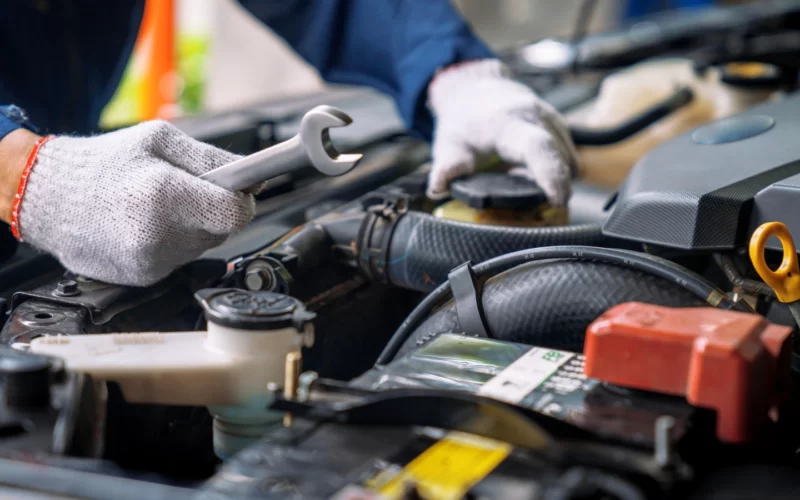
There are plenty of DIY projects to keep your vehicle running smoothly and efficiently. The following tips will help you keep your car in tip-top shape so it can last longer.
Check the Pressure in Your Tires
- Check the pressure in your tires. Under-inflated tires can cause a number of problems, from increased fuel consumption to poor handling and even blowouts. To check the pressure, look for a sticker on the inside of each doorjamb that shows what size tire is installed on that wheel; this will also include a recommended PSI range for those tires. Use an air gauge (you can buy one at any auto parts store or online) to measure the PSI and make sure it falls within that range–if it doesn’t, add more air until they do.
- Add air if necessary. If you find that one or more of your tires is significantly under-inflated (by at least 6 PSI), add some air at home or take it into a shop for assistance with bulking up on pressure before heading out again!
Wash Your Car
Washing your car is an easy way to make it look new again, but there are some things you should keep in mind when washing your vehicle. The first thing you should do is find a place where you can wash your car. If there isn’t a designated area for this purpose, then consider using a hose or bucket and sponge to wash the outside of your vehicle at home.
You’ll also want to consider whether or not it’s best for you to wash when it’s sunny out or when it’s cloudy/rainy outside; this will help determine if there will be any water spots left on top of the paint once everything dries off after being washed. You may even want to go ahead and wash during early mornings before most people get up so that no one will see what kind of messes could potentially happen during this process!
Get a Tune-Up
A tune-up is a good idea for any vehicle owner, but it’s especially important if you want to keep your car running smoothly and reliably. A tune-up can help avoid costly repairs later on and save you money in the long run by ensuring that your engine runs more efficiently.
The best way to know when it’s time for a tune-up is by paying attention to signs that indicate an oil change or other maintenance is needed. If there are any unusual sounds coming from under the hood, take note of them so that they can be addressed as soon as possible–you don’t want anything serious going wrong while driving! If there are no obvious signs that something needs fixing right away, try taking note of how often (or little) gasoline costs per mile driven; this will give some indication of whether regular maintenance checks are needed before any major problems occur later down the road.
Run an Oil Change
Before you take your vehicle in for an oil change, make sure to check the oil level. This can be done by removing the dipstick and wiping it clean with a rag or paper towel. If there’s no visible oil at all on the dipstick, then you’ll know that it’s time for a change. You should also inspect your oil filter for any damage and replace it if necessary–it’s usually easier to do this before changing out your engine oils so that they aren’t contaminated by old dirt and grime on top of everything else!
Once those steps are taken care of, fill up with new oil according to manufacturer recommendations (usually around 3 quarts). You may also want to buy some extra supplies while at home depot or lowes; having enough tools on hand will make things go smoother when doing DIY projects like these ones! And don’t forget to dispose of your tools properly. A quality toolbox will help you a lot in this because you will always know exactly where your tool is!
Test Battery Cables and Wiring
The first step to ensuring your battery is in good condition is testing the cables and wiring. Make sure you have a multimeter on hand, or you can use an app like Battery Doctor (iOS) or Battery Saver (Android).
Next, clean off any corrosion from each terminal with sandpaper or a wire brush. If you’re unsure whether your car needs new cables, start by replacing those that appear damaged or worn out–but don’t worry too much about this step if it seems unnecessary for now!
Inspect the Exhaust System
When you’re inspecting your exhaust system, check for leaks, cracks and corrosion. You’ll also want to make sure that it’s not dented or rusting away. If there are loose hangers or bolts on the muffler (or any other part of your vehicle), tighten them up immediately before they cause problems later on down the road.
If you find anything missing from your exhaust system–such as an oxygen sensor–you’ll need to replace it with a new one before going any further with repairs.
Now that you know how to do your own car maintenance, it’s time to get started!





